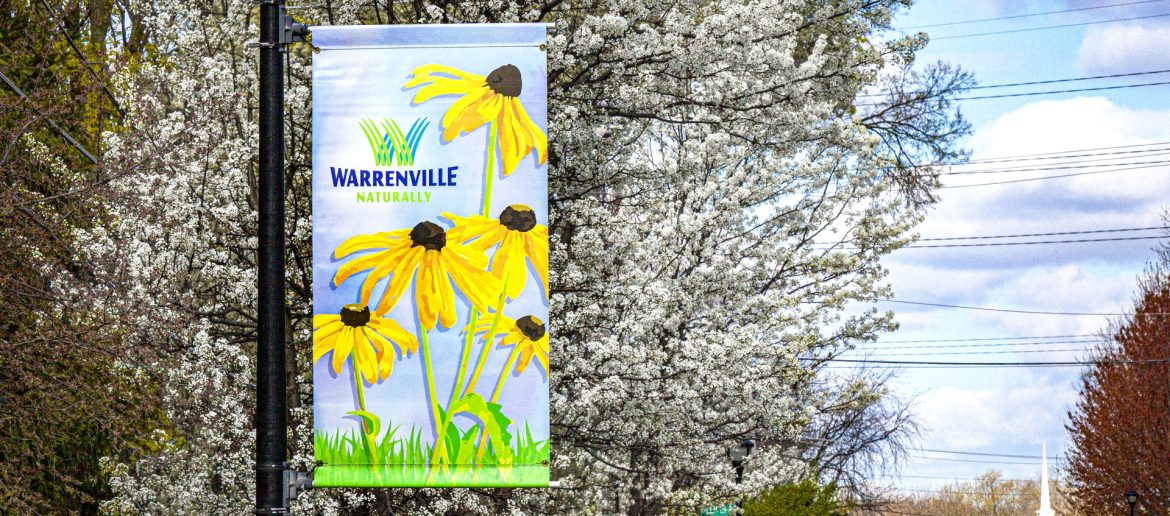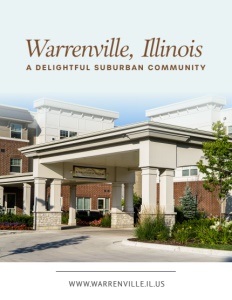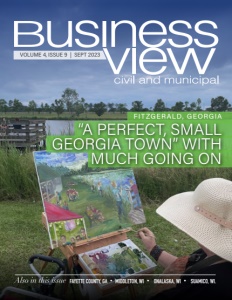Warrenville, Illinois
A delightful suburban community
No longer a small rural community, Warrenville has its eye to the future with top-tier amenities
Warrenville, Illinois, ideally located about 30 miles west of Chicago, can be found in the northeast corner of the Prairie State. With an enviable setting for residents to enjoy, the town also boasts deep historical roots. Once a small rural community, Warrenville can now offer many of the perks of larger communities while still maintaining its quaint small-community charm.
Founded in 1833 by Julius Warren who claimed the land along the DuPage River and helped new settlers from the east by providing them the milled lumber to build their homes. Warren also built the new town’s first major establishment, an inn and tavern that still stands today, operated its first stagecoach line, built a gristmill, acted as a mail carrier and census taker, and eventually earned the honorary title of Colonel for his long-time leadership of the community.
For most of its history, Warrenville remained rural. In fact, when Mayor Dave Brummel’s father was born there in 1913, right up until 1967, when it was finally incorporated as a city, it was still just a small farming community out on the prairie. And because many of its residents preferred to keep its rustic character intact, six earlier attempts to incorporate had been turned down. “But my predecessor, Mayor Vivian Lund, determined that if we were going to survive and be sustainable and do well, we needed to become an incorporated community that was recognized by the state,” Brummel recounts. “So, that was a huge step in our history.”
“She was mayor for 20 years and did an admirable job getting the basics in place,” he continues.
“When she realized that she had brought us about as far as she could, she prevailed on me to take over. I saw my task as one to turn us into a professional, policy-driven community, recognizing that while we needed to maintain our small-town heart and values and our rural sensibilities, we were now a suburban community surrounded by other suburban communities west of Chicago, and that entailed some necessary changes going forward for us to make sure that we were sustainable and that we prospered.”
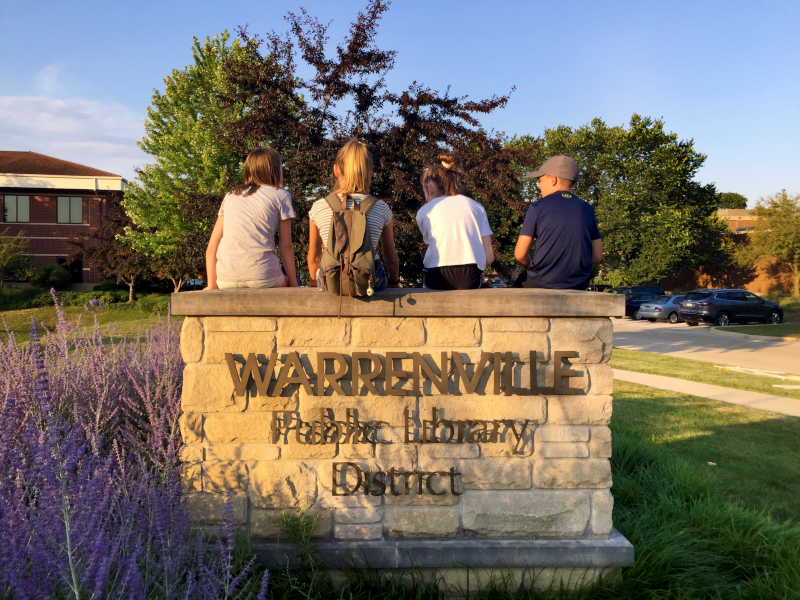 New mayor increases government’s role
New mayor increases government’s role
As Warrenville’s fifth mayor, having served since 2005, Brummel oversaw the city’s evolution, managing to recruit good elected officials and hire excellent staff people.
“That combination has proven to be the key to our success over the last 20 years,” he states.
“Staff would look at opportunities, bring the best ones forward to the elected officials, and they would determine whether those were worth moving forward on. Because of the outreach operations of our staff, in the last ten years, we have been very successful in attracting the business development community so that they’re interested in coming here. We’ve also had some very successful residential developments that fill up quickly. And we’ve been in a position to take advantage of those opportunities because we’ve laid the groundwork and done the homework. We have an excellent reputation in the development community – people get their approvals when they need them. I’ve heard again and again that we get things done.”
Today, Warrenville is a dynamic 5.5-square-mile suburban community nestled in the center of a research and development corridor that runs along Interstate 88 through DuPage County. Its population of 13,553 allows it to maintain its small-town feel and still have the advantage of drawing upon a diversified tax base to ease the financial burden of its residential property owners.
The city’s largest employer, and a major source of property tax revenue since its construction in the late 1980s, is Cantera, a commercial city within a city, built on the former grounds of a 650-acre limestone quarry. Cantera is home to three hotels, three banks, many restaurants, a family entertainment center, movie theaters, retail stores, daycare centers, a 100,000-square-foot fitness club, two residential complexes, and numerous corporate offices – including BP America, EN Engineering, and Exelon Nuclear, among others. And there’s room for more growth and innovation.
“Traditionally, the focus on that area has been on corporate headquarters and office destinations but, like the rest of the country, we’re experiencing the challenges with office development, so we’ve expanded the potential for that area to accommodate additional uses,” Brummel says.
“It’s got great infrastructure, beautiful buildings, and as we look to occupy those spaces, certainly we’re open to future office uses, but as that potential may be limited, we’re looking at other possibilities such as medical, educational, recreational, etc. As a city, we are looking to figure out a plan for how to occupy those spaces; I think that will be our next focus in terms of planning.”
“The Cantera area regulations occurred 30 years ago and the zoning for that type of area can be a little complicated, but with our customer focus we want to find a way to make it more accommodating to help those developers that want to locate there. And we have tools in place that will help them do that,” he elaborates.
Growth expands to other parts of the city
Other growth in Warrenville includes new developments in the southwest part of the city. “In 2016, we put together the southwest district plan that outlined a number of ideas and planning initiatives that the city wanted to see in that area,” says Senior Civil Engineer Kristine Hocking.
“Infrastructure was a big part of that plan. At that time, there was very little, to no, infrastructure in the southwest district. Some of the projects that needed to be done were extending various roads, right-of-way, water and sewer, etc. We had the plan all set, but we needed a catalyst to occur.”
As it turned out, the city of Aurora, just southwest of Warrenville, had just built a new Amazon facility and was also working to extend its infrastructure outward. As complementary infrastructure projects were completed by both municipalities, developers jumped on board.
“We were able to put together some re-development agreements in the area,” Hocking reports, “specifically Lexington Trace, which was a 20+-acre area in the southwest district, for 106 single-family townhomes. The Everton project was born as well. They added 89 townhomes, 259 apartments on a 32+-acre property. Those two large developments really spurred the southwest district and added a lot of infrastructure during that process for future developers to come. There is still a lot of vacant land in that area and we’re currently working with a couple of conceptual layouts for future development in that area.”
Cristina White, Warrenville’s City Administrator mentions another project on the city’s agenda.
“We are in the process of reviewing our Old Town civic center area to encourage future development and growth in that part of the community; to create that central hub for people to come together. There is a conceptual design that paints a picture of what we’re looking for – spaces for people to congregate, to connect, to shop. We’re looking for destination-type businesses, hopefully, some local entrepreneurs, to take up shop in that area and spark that next development.”
The plan, known as OTRS (Old Town Redevelopment Site) #2 aims to replace a former gas station site that the city acquired in 2020, remediate the contaminated land, adjoin it to three adjacent city-owned properties to its north, and then attract private, mixed-use development along the street frontages, while the city develops the site’s significant amount of green space to accommodate community events and activities that will help to support the businesses that will locate there.
As is its custom, the city is soliciting public input on OTRS2 and is working with interested stakeholders to help design the future of Warrenville’s historic core.
Residential developments vary
Reaching out to the greater community, and making sure that the public’s needs and wishes are respected, is key to Mayor Brummel’s governing style and part of his philosophy on how to create and maintain a diverse residential base.
“We’ve been very sensitive about citing new developments and the changes they will bring to the community,” he explains.
“We have different goals for different parts of town. We’ve found places in Warrenville where large developments are appropriate; we’ve encouraged them and we’ve got them now. But we’ve also protected the older part of the community so that the new developments don’t have any negative impacts on those neighborhoods. You can go to the older part of town and it essentially looks the same.”
“We’re getting a nice mix in terms of housing opportunities that we didn’t have in the past. That diversity in housing stock gives us the opportunity for different types of folks to move into Warrenville. You can have an apartment, a nice house with a big yard, or a modest house with a small yard. That diversity is something that we’ve done intentionally because we knew that it was necessary for the future of the community.”
Stafford Place is another example of Warrenville’s careful and considered approach to residential development. “It was a factory site of 4.25 acres that was contaminated pretty heavily,” Brummel notes.
“We found an opportunity about 12 years back to purchase that property with the understanding that if we didn’t purchase it, and intentionally clean it up, it would forever be a brownfield place and would sit there and be a blight in our attempt to re-imagine our downtown.
The city purchased the land and spent a better part of a decade cleaning the area up to ensure that it was up to a residential standard and then the city obtained their NFR (No Further Remediation) letter from the state.
“We then spent a couple of years shopping for developers to try and get exactly what we thought was appropriate for that area; and had a lot of offers that weren’t what we were looking for. We finally found a high-quality, local developer that came up with an outstanding plan. So we took that contaminated site and turned it into 27 single-family homes.”
“It’s a delightful little neighborhood that’s very well done. It’s right on the Prairie Path, close to the City Hall and Police Department, and close to the Park District. That’s one of the most satisfying things that we do; we take something that has minimal value or no value at all, and turn it into something that has value.”
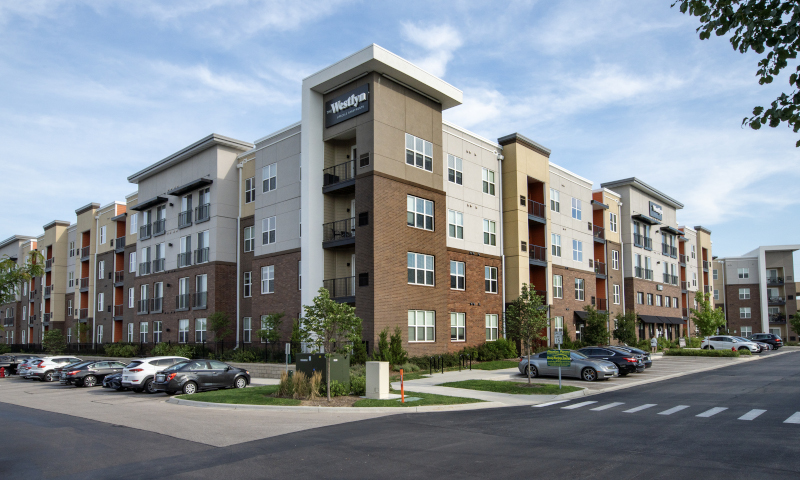 The city’s attractions
The city’s attractions
Speaking of value, even with its relatively small size, Warrenville offers many amenities to its residents and guests. It maintains a growing collection of public art, both in the City Hall and Public Library; it is home to its own community theater and can present full-scale Broadway musicals at the Warrenville Community Building, as well; and it hosts its own bagpipe and drum band.
“We are fortunate to have strong partnerships with our Park District, Library District, and other community organizations to co-host events that happen throughout the year that have become traditions in the community and we always look for opportunities to improve and expand those,” says Amy Emery, Director of Community and Economic Development. “They include the 4th of July festivities and Summer Daze which is the first weekend in August. We also have events that happen at other times in the year: Arbor Day Celebration in April, Bike Rodeo in May, the Multicultural Festival in June; in the fall we have Art on the Prairie; and Holly Days in December.”
One of Warrenville’s best features is its ability to incorporate the natural landscape into the fabric of the town. Located on the banks of the West Branch of the DuPage River, the city is essentially surrounded by a necklace of five Forest Preserves and the Fermi National Laboratory.
Together, these public spaces encompass 10,000 acres of open space and contain approximately 30 miles of off-road bike paths. This vast network of public open spaces provides many recreational opportunities, including fishing, canoeing, tubing, biking, hiking, cross-country skiing, and camping.
The future looks bright
Going forward, Brummel says that he’d like to see the city “continue to do things that we’re doing well and even do them better.
“I’m excited at the prospect of our redevelopment of our Old Town and making sure that happens,” he adds.
“We have a couple of areas where we can see new neighborhoods develop; it’s important that those are ones that fit into the community and the neighbors approve of and welcome. We want to keep that culture of small-town availability. We try to promote that. In terms of businesses, we have some vacancies in Cantera that we’d like to see reimagined and used in a way that offers long-term benefits to the community.”
In terms of his own future, Brummel is blunt. “I’d like to stay mayor forever,” he opines. “My roots are pretty deep here. I’m intimately involved in the future of this community and I find it a delightful thing to be involved in.”
AT A GLANCE
Warrenville, Illinois
What: A dynamic suburban community that retains its small-town charm
Where: 30 miles west of Chicago
Website: www.warrenville.il.us
